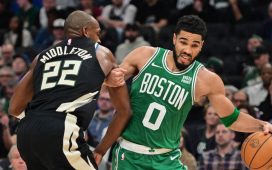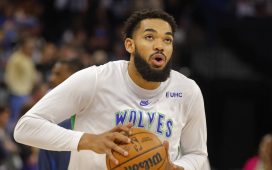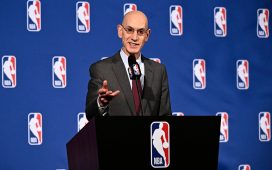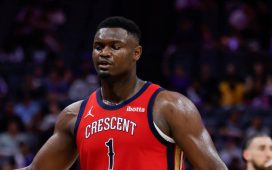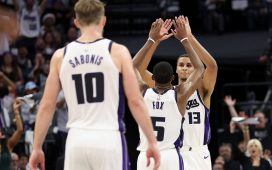Story of the summer:
The Trail Blazers exceeded expectations in a big way last season, winning 53 games and making the Western Conference finals after oddsmakers gave them a preseason over/under forecast of 42.5 wins.
Still, while Portland’s two playoff series victories produced some memorable moments, including a Damian Lillard dagger that will show up in highlight packages for years, the season eventually ended the same way it did in 2018, on the wrong end of a frustrating four-game sweep by a conference rival.
That run to the Western Conference finals at least quieted chatter about whether Lillard and CJ McCollum have to be split up. The Blazers further quieted that speculation by signing both star guards to massive new contract extensions during the offseason, locking up McCollum through 2024 and Lillard through 2025.
Even though the Blazers were willing to double down on their backcourt duo, it still seemed as if this roster was missing the piece that would help get it over the top and into the NBA Finals. Unfortunately, Portland entered the offseason projected to be a taxpaying team and lacking the resources necessary to bring back all the team’s key free agents, forcing president of basketball operations Neil Olshey to get creative.
Olshey managed to bring back Rodney Hood, but lost several other notable free agents, including Al-Farouq Aminu, Seth Curry, Jake Layman and Enes Kanter. Needing a big man to replace Kanter and injured center Jusuf Nurkic, Olshey surrendered two more players from last year’s roster — Maurice Harkless and Meyers Leonard — in a trade for Hassan Whiteside.
After a few more low-cost free-agent signings and trades, the Blazers had set their roster, but questions remain. Besides Lillard and McCollum, six of Portland’s next eight most-used players from last year’s team are gone, and one of the two still around, Nurkic, probably won’t play until sometime in 2020. In addition to to all that roster turnover, the Blazers sacrificed much of their depth on their wing when they lost Aminu, Curry, Harkless, Layman and Evan Turner.
The Blazers have a strong culture and may be evolving into one of those teams like San Antonio that becomes perennially underrated. But at this point, this year’s squad doesn’t look like an upgrade over last year’s.
Key offseason losses:
Aminu and Harkless rarely filled up the box score, and Harkless, in particular, was inconsistent last season, making just 27.5 percent of his three-point attempts. But both veteran forwards were strong defenders who fit well alongside Lillard and McCollum because they didn’t need the ball to be effective. The Blazers won’t have as many players who fit that bill this season.
While Curry and Layman weren’t as versatile defensively as Aminu and Harkless, Curry was among the NBA’s most accurate three-point shooters last season, knocking down 45 percent of his tries from beyond the arc, a mark that wasn’t far off from his career rate of 43.8 percent. Portland will miss his shooting.
Layman’s 32.6 percent three-point rate wasn’t in the same ballpark as Curry’s, but he was improving from outside and emerging as a potential stretch four. Despite his restricted free-agent status, the Blazers ended up letting him go for essentially nothing, since re-signing him would have cost the organization exponentially more in tax penalties.
The Blazers opted to move on from Turner, who served as the backup point guard last season, because they felt that Anfernee Simons was ready to take on a larger role. Assuming they’re right about Simons, acquiring a wing (Kent Bazemore) in exchange for Turner was a savvy move.
Finally, the frontcourt duo of Kanter and Leonard performed pretty well after Nurkic broke his leg last season, but relying on them for a full season might have been unsustainable. The Blazers reportedly tried to bring Kanter back with their taxpayer mid-level exception but ultimately used that MLE on Hood when they didn’t get an answer from Kanter right away.

